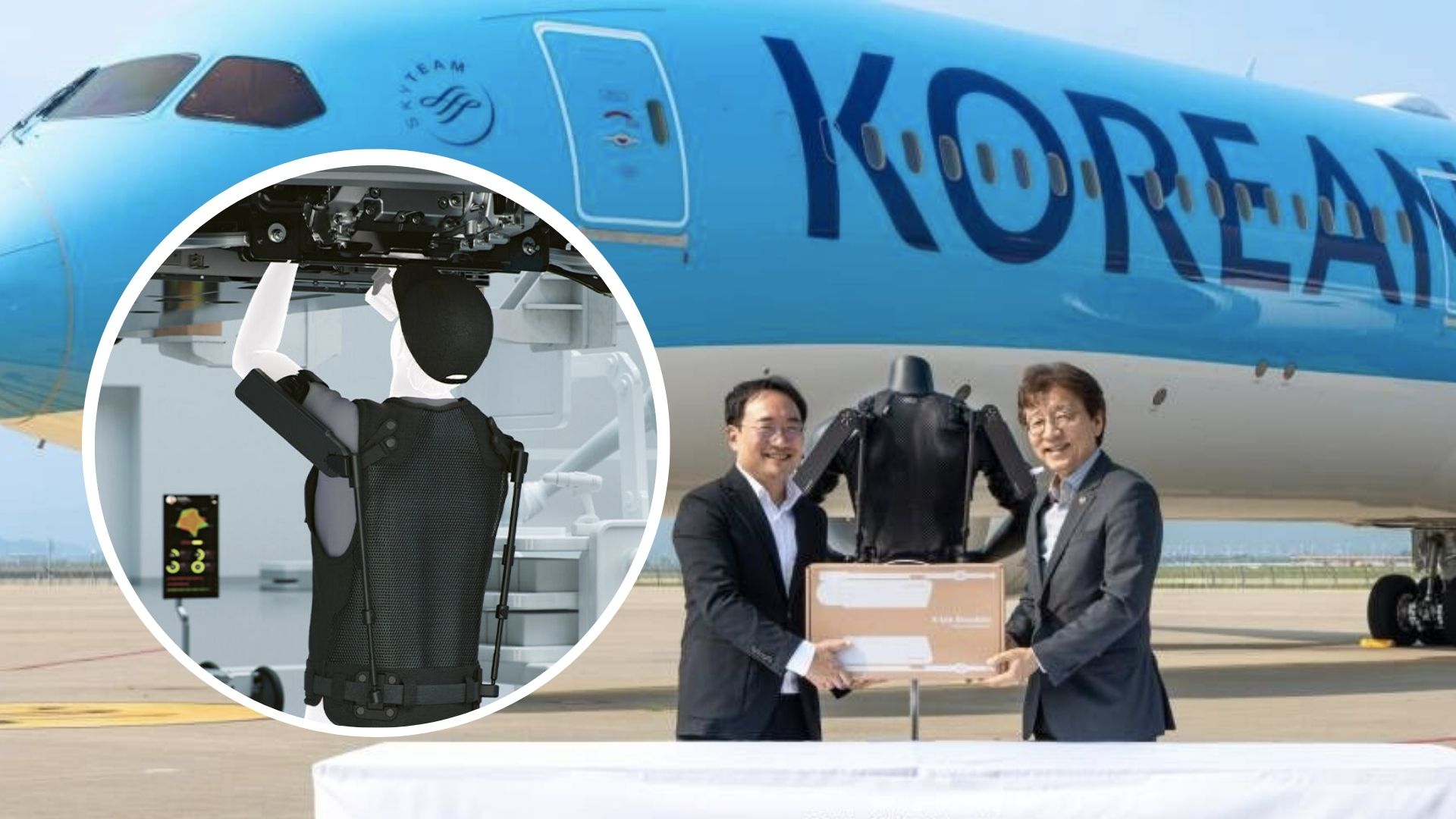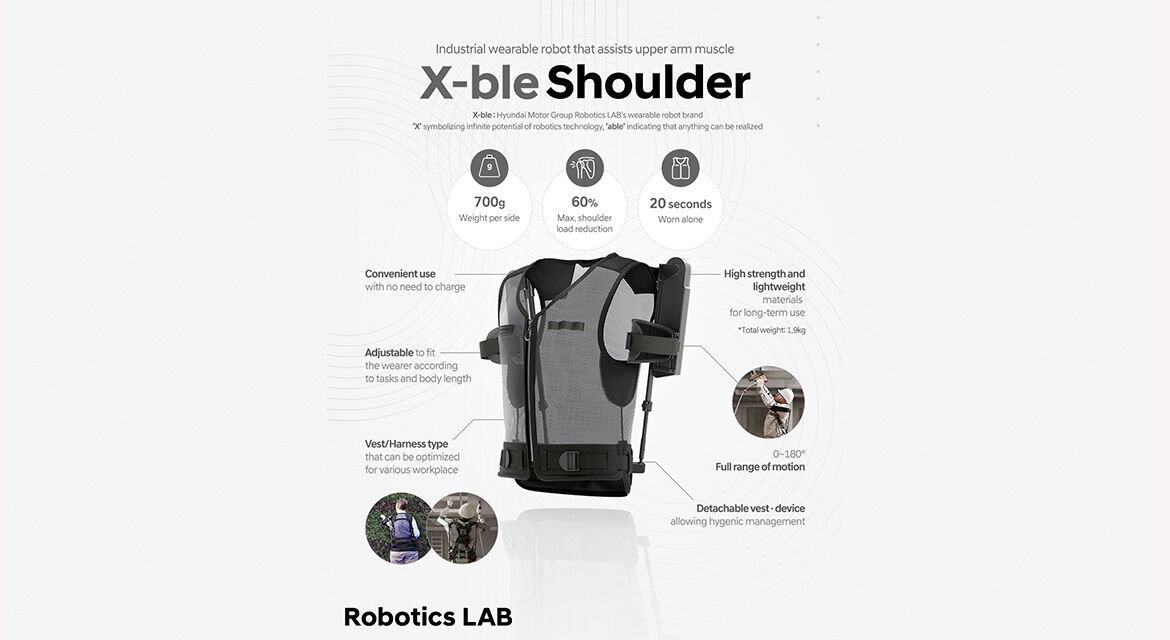A wearable robot has entered into its commercial journey as it has been deployed for...

A wearable robot has entered into its commercial journey as it has been deployed for Korea Air’s services. Developed by Hyundai Motor and Kia, the wearable robot X-ble Shoulder is set to be deployed in various aircraft assembly and maintenance sites.
The robot will also play a key role in commercial and military aircraft, drones, and satellite launch vehicles.
The X-ble Shoulder is designed to reduce shoulder loads from overhead work, which is common in aviation maintenance.
Wearable robot designed to assist upper-arm strength
The handover ceremony for the delivery of the first unit was held at Korean Air’s aircraft maintenance hangar in Incheon, on July 8.
The robotic device is designed to assist upper-arm strength and alleviate shoulder loads during repetitive overhead tasks—a common posture in aircraft maintenance. By reducing musculoskeletal loads, the device helps minimize the risk of injury and fatigue, thereby enhancing productivity.
“The X-ble Shoulder embodies the technological expertise and collaboration of our employees,” said Dong Jin Hyun, vice president and head of Robotics LAB at Hyundai Motor and Kia.
“We aim to expand its application across various industries to help prevent injury and improve efficiency for workers.”
Non-powered torque generation mechanism
The companies revealed that a standout feature of the X-ble Shoulder is its non-powered torque generation mechanism, which eliminates the need for batteries or charging. This keeps the unit lightweight and easy to maintain while ensuring uninterrupted operation.
The robot incorporates a muscle compensation module that provides assistive torque, reducing shoulder joint loads by up to 60% and anterior/lateral deltoid muscle activity by up to 30%, according to the companies.
“We anticipate that workers’ health and job satisfaction will be enhanced through the introduction of X-ble Shoulder,” said Hyunboh Jung, managing vice president and head of the Aerostructure Business Department at Korean Air.

“We are actively reviewing further adoption to uphold the highest standards in both aircraft manufacturing and maintenance safety, and quality.”
After this first delivery, Hyundai Motor and Kia’s Robotics LAB plans to begin broader distribution to pre-order customers, including Hyundai Motor Group affiliates and domestic manufacturers in Korea. Sales will be expanded to industries such as construction, shipbuilding, and agriculture. Hyundai Motor and Kia also aim to enter global markets starting in 2026, according to a press release.
Device ensures practical usability
The companies, in 2022, began testing X-ble Shoulder prototypes at their global production sites to ensure practical usability. Over 300 on-site workers participated in pilot trials, providing direct feedback that led to further refinement of the robot’s technology and ergonomics.
The X-ble Shoulder, which was unveiled in 2024, can reduce shoulder load by up to 60 percent and anterior/lateral deltoid muscle activity by up to 30 percent to improve the quality of life of workers.
The device uses carbon composite material and wear-resistant material used in high-end vehicles.
The companies also claimed that due to the product’s high strength and light weight, it can be used stably without difficulty even for long hours of work. Also, the parts that directly touch the user’s body are designed to protect against bodily injury that can occur in industrial sites by applying impact-resistant material used in the top part of the vehicle’s crash pad.
The modular robotic components and the detachable, washable vest make this product not only easy to manage and adaptable to various work environments, but also compatible with standard work attire across different industries, according to Hyundai.